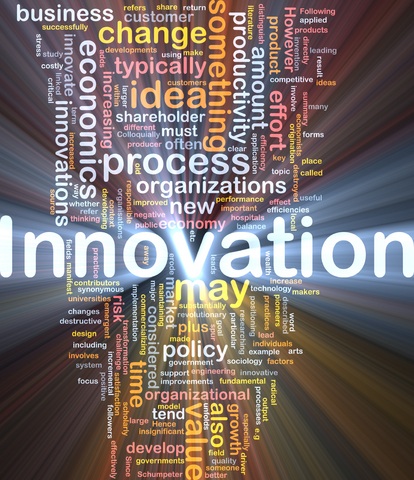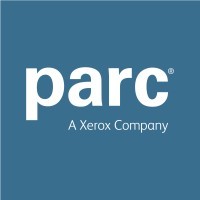This article was contributed by PARC (Palo Alto Research Center, Inc.) as part of an ongoing series in UX Magazine. Visit the PARC website to learn more about PARC’s current work and how to work with them, and to read other posts and publications by PARC scientists.
I—and I imagine you—have encountered a lot of confusion, and misconceptions, about ethnography. Especially relative to the many methods that can be used to inform technology design. This article is the first of a series intended to clarify a few things about this methodology.
What is ethnography?
First: there are some helpful definitions that can be found through a simple search.
In case you’re in a hurry, I’ll also summarize it (albeit inadequately, no doubt) for you: a holistic, in-person, and qualitative approach to the study of human behavior and interaction in natural settings.
But rather than expound on the semantic aspects of ethnography in my very first article here, I’d really rather respond to the obvious and eminently reasonable question I often hear in my work as a researcher in the field of user-centered technology innovation:
“What’s it good for, in my business?”
Ethnography adapted for industry
In today’s hard-nosed and often economically trying times, ethnography can be seen as a tactical weapon enabling companies to gather new insights and thus gain advantage over their competition.

Out of the academic Garden of Eden, modern ethnographers have been driven to move and produce compelling results faster, while operating within a number of budgetary constraints and oft-conflicting business demands.
Ethnographers’ data collection and analysis methods have therefore been condensed, recombined, adapted—both systematically and as-needed—to meet these business demands. We’ll describe the methods to this madness in our next article, but in this article I categorized some of the commercial objectives for which these methods are applied.
Objectives for ethnography in industry
There are many practical applications of ethnographic methods in commercial contexts, particularly those that involve technology and workscape innovation (which is what my colleagues and I are most approached about).
Because there is considerable confusion about these applications, I want to propose a simplified classification of purposes to which ethnography can be applied.
Engage in opportunity discovery.
- For innovating products and solutions, the objective might involve understanding the culture, practices, and needs for support within a particular workscape—for example, employees of a bank or a manufacturing plant.
- For innovating or improving processes, the objective might involve identifying problems or undesirable phenomena in some setting that could be fixed by some organizational or procedural change—such as misunderstandings that lead to mistakes in satisfying customer requests in contact centers.
Sometimes, the goal is to understand the “big picture” (e.g., leisure outings with clients as part of the sales process). While these goals may seem open-ended on the surface, in industry settings one or more stakeholders always have an objective in mind (e.g., to understand the subtle returns on investing in leisure activities, since they can’t be captured in other ways).
- For settings, the open-ended objective could be to understand the rich culture and variety of tacit and explicit practices within a particular workplace—those of bank or manufacturing plant employees, for example.
- For activities, the open-ended objective might be to understand all tacit and explicit practices related to a particular role, practice, or function (such as contact center operations).
Gather information for a targeted purpose.
- Diagnosing the cause and/or nature of one or more specific problems (such as employee dissatisfaction and high turnover in a company) or product failures (for example, why a certain hardware device is proving to be unpopular in its target market).
- Identifying requirements that will inform the design of a specific product or enterprise solution—for example, what’s the best form factor for an e-reader targeted at executives and knowledge workers reading work-related content?
Test assumptions and/or evaluate performance.
- Oriented towards practices, the test objective usually involves understanding the real vs. ideal execution of some role or process of interest—for example, if and why contact center operators aren’t following their script? An evaluation objective might be to assess performance in terms of some explicit values—for example, how satisfied is the customer, or, how often does a store assistant get the customer’s order wrong?
- Oriented towards usage, the test objective may be to understand the real uses of some artifact or product “in the wild,” as opposed to how it was designed to be used—how are people really using photocopiers, for example? (This was famously studied by Lucy Suchman at PARC in the 1970’s, which is when the notion of corporate ethnography started to take off). An example of an assessment-oriented objective here might be: how quickly or smoothly can someone perform a task with a specific device?
Transfer or create ethnographic methods/ competencies.
This is an area PARC uniquely specializes in, and gets numerous requests for (particularly from foreign corporations who seek to differentiate themselves from their upstart competitors).
- The didactic objective might involve some sort of learning-by-doing (where we scaffold analysts or employees in practicing the methods themselves), or some demonstration (where we illustrate methods and their value to those who want to learn their value).
- Finally, there is also reflexive methods development, where one develops and tries out new ethnographic methods in practice by trying them out and refining them based on ongoing experiences and findings. This is something we constantly customize to meet specific study objectives and continually evolve the field.
Mapping objectives—often in the plural
I would caution that there are definitely some nuances in how you customize, combine, and apply ethnographic and other related methods to suit specific needs that I didn’t have time to go into here—this list is not complete and represents a simplified classification. My intention was to explicate and delineate the diverse objectives behind ethnographic studies that I’ve experienced at PARC.
But don’t assume that there can’t be multiple objectives for any given ethnographic study. The opportunity to glean field insights is rare, so it might as well serve multiple objectives at once—as long as one doesn’t dilute focus in attempting to answer every possible question.
And of course, there are always high-level objectives such as “give Apple a run for their money” or “make our company look more intelligent”. The art of an experienced ethnographer is knowing how to map the general classification above on to business leaders’ particular desires.
This article is Copyright © 2010 Palo Alto Research Center Incorported, All Rights Reserved.






